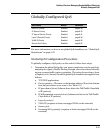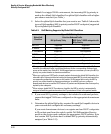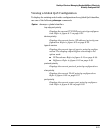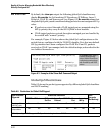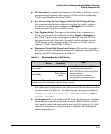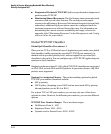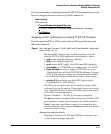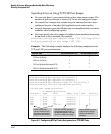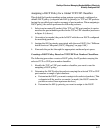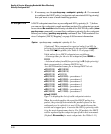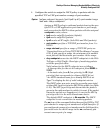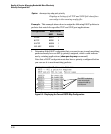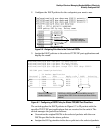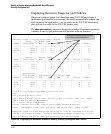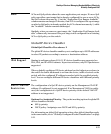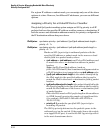
Quality of Service: Managing Bandwidth More Effectively
Globally-Configured QoS
Assigning a DSCP Policy for a Global TCP/UDP Classifier
This global QoS packet-marking option assigns a previously configured or
default DSCP policy (codepoint and 802.1p priority) to TCP or UDP packets
having the specified port number or range of port numbers. When assigning a
DSCP policy, the switch performs the following actions:
1. Selects an incoming IP packet if the TCP or UDP port number it carries
matches the port number specified in the TCP or UDP classifier (as shown
in figure 6-4, above).
2. Overwrites (re-marks) the packet’s DSCP with the new DSCP configured
for matching packets.
3. Assigns the 802.1p priority associated with the new DSCP. (See “Differen-
tiated Services Codepoint (DSCP) Mapping” on page 6-88.)
4. Forwards the packet through the appropriate outbound port queue.
Creating a DSCP Policy Based on TCP/UDP Port Number Classifiers.
The following procedure creates a DSCP policy for IP packets carrying the
selected TCP or UDP port-number classifier.
1. Identify the TCP or UDP port-number classifier you want to use for
assigning a DSCP policy.
2. Determine the DSCP policy for packets carrying the selected TCP or UDP
port number or range of port numbers.
a. Determine the DSCP you want to assign to the selected packets. (This
codepoint will be used to overwrite (re-mark) the DSCP carried in
packets received from upstream devices.)
b. Determine the 802.1p priority you want to assign to the DSCP.
6-27



